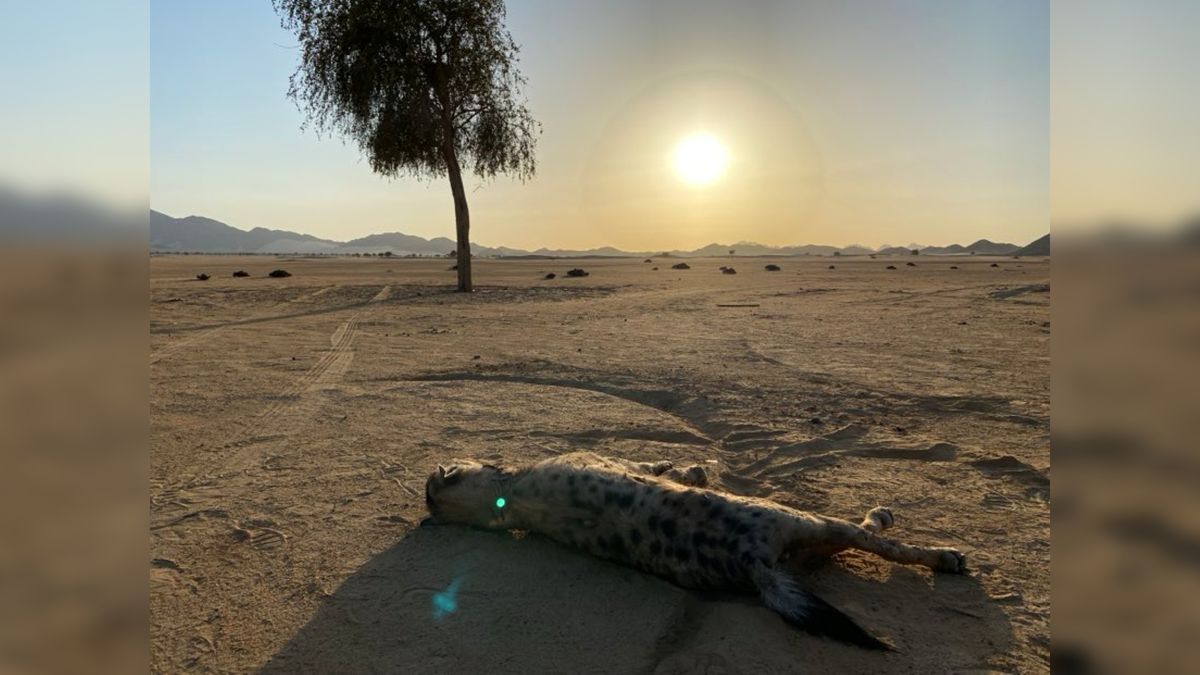A spotted hyena has been reported in Egypt for the first time in thousands of years after it ventured far beyond its normal range. The hyena then ate two goats and was swiftly killed by humans in a pickup truck.
Spotted hyenas (Crocuta crocuta) live across much of sub-Saharan Africa, but the species went extinct in what is now Egypt 5,000 years ago, when a changing climate made the region too dry for their prey.
The wandering hyena was found last year deep in the Sahara desert, hundreds of miles north of the species’ normal northern limit. Researchers aren’t sure what the hyena was doing so far north, but it could have been following prey animals that were taking advantage of a wet spell in the region.
Local people tracked and killed the hyena in Wadi Yahmib, about 19 miles (30 kilometers) from the Sudanese and Egyptian border, after it killed two goats, according to the study, published Nov. 15, 2024 in the journal Mammalia.
“The local people are master trackers and familiar with all large mammals of the area,” the study authors wrote. “The hyena was tracked by local people, located, chased, and intentionally hit by a pickup truck.”
Livestock losses can be financially devastating for people in the region. The local people live alongside striped hyenas (Hyaena hyaena), but these smaller hyenas typically don’t attack livestock, according to the study.
A researcher photographed and filmed the dead hyena and sent the images to colleagues for identification. Study lead author Abdullah Nagy, a wildlife ecologist at Al-Azhar University in Egypt, told Live Science he was surprised when he saw the photographs.
Related: Yellowstone’s ‘queen of the wolves’ killed by rival pack after living to 11 years old and having 10 litters of pups
Nagy explained that Egypt underwent a significant environmental shift around 5,000 years ago when the Sahara began to get drier through a process called aridification.
“Previously, the region boasted a lush landscape similar to sub-Saharan Africa, supporting a diverse range of large mammals such as elephants, giraffes, leopards, and spotted hyenas,” Nagy said. “However, a gradual aridification process transformed the ecosystem into the Sahara Desert, an environment no longer suitable for these species.”
The study highlights that more recent environmental changes could have enabled at least one hyena to return to Egypt. A regional weather cycle over the last five years increased rainfall and plant growth in the region, which could have supported prey for a curious, traveling hyena, according to a statement released by Mammalia’s publisher, De Gruyter, on Tuesday (Jan. 21).
The study authors noted that in addition to prey, slaughterhouses could have attracted hyenas to the area. The researchers also speculated that Sudan’s political instability and civil war might have contributed to an increase in spotted hyenas in the region. That’s because hyenas engage in anthropophagy — meaning they eat human flesh — and will prey on weakened or vulnerable humans, especially during times of human crisis, according to the study.
Was the hyena alone?
Spotted hyenas normally live in complex social groups that can include up to 100 individuals. A pack of hyenas working together can hunt big prey such as young rhinos, wildebeest and zebras, according to San Diego Zoo. However, hyenas are very versatile carnivores, capable of hunting alone and scavenging food from humans if necessary.
Nagy noted that the hyena killed in Egypt could have been hunting alone, but it may also have had company.
When prey isn’t abundant, spotted hyenas hunt alone, but it’s possible that others were there and not detected, he said.


